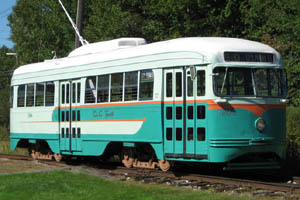
- Builder
- St. Louis Car Co.
- Description
- PCC, Pre-war air-electric
- Secondary Use
- Experimental testing
- Type
- City and Suburban Streetcars
- Year
- 1941
- Retired from Service
- 1962
- Acquired by the Museum
- 1985
- Note
- As of October 2016, No. 1304 is in the Town House Restoration Shop.
- Fund
- 870
- Sponsor/Manager
- Jim Schantz
D.C. Transit 1304
From Washington D.C.
History
The Capital Transit Company was formed in 1933 to consolidate ownership of streetcar lines in Washington, DC and its suburbs. Washington, like a few other cities, banned “unsightly” overhead wires from its streets in much of the city’s central area. In these areas, Washington streetcars collected power from an underground conduit between the running rails. Most of the streetcars also had trolley poles for operation outside of the city center. Capital Transit made nine purchases of PCC cars over an eight year period to replace conventional cars such as Seashore’s No. 197. Each new order reflected the latest changes in PCC technology. Washington’s PCC fleet reached 489 cars. To fit its carbarns, Capital Transit used a short version of the PCC. The PCC car takes its name from the Electric Railway Presidents Conference Committee established in the early 1930s to design a modern, streamlined streetcar. It was a successful design with approximately 5000 PCC cars being built between 1936 and 1952 for systems in the U.S. and Canada. Some PCC cars built after World War II used the all-electric variation having electric brakes instead of the earlier air-operated brakes, but Washington never ordered any of these. No. 1304 is one of 15 PCCs purchased by Capital Transit from St. Louis Car in 1941. A strike provoked congressional action against Capital Transit. In 1956, a new company, DC Transit took over the franchise, with a proviso that streetcars be eliminated by 1963 in spite of opposition from DC Transit’s owner, O. Roy Chalk. The last Washington streetcar ran in 1962.
In 1961, General Electric Co., in Erie, PA, acquired one car, No. 1304, for use in automatic train operation testing. GE equipped No. 1304 with an electronic package wired into its control system so that the car could operate without a motorman. GE installed a pantograph to collect power from an overhead wire but kept the car in its two tone green, white and orange DC Transit paint scheme. GE named the car “Tomorrow.” GE operated No. 1304 on its Erie test track for several years. These tests helped lead to automated operation on the Bay Area Rapid Transit in the San Francisco area.
The Columbia Park & Southwestern (known as “Trolleyville USA”) at Olmsted Falls, OH acquired No. 1304 from General Electric at an unknown date. Seashore acquired the car in 1985, and restoration work began in the late 1990s. The restoration included extensive structural and cosmetic work, replacement of missing parts, and restoring the car’s control system to its original state, which was a major project as no original wiring drawings exist. Car 1304 includes a display of the conduit plow used for power collection within the District of Columbia where overhead wires were banned. Seashore has restored the car to its DC Transit appearance.
Technical Information
- Seats: 49
- Control: General Electric PCC
- Brakes: Dynamic / Air Tr / Track
- Compressor: PC-2
Trucks
- Number: 2
- Manufacturer: Clark
- Model: B-2
Motor
- Number: 4
- Manufacturer: General Electric
- Model: 1198F1
Weight and Dimensions
- Length: 44’
- Width: 8’ 4.00"
- Height: 11’
- Weight: 34440 lbs.
Additional Images
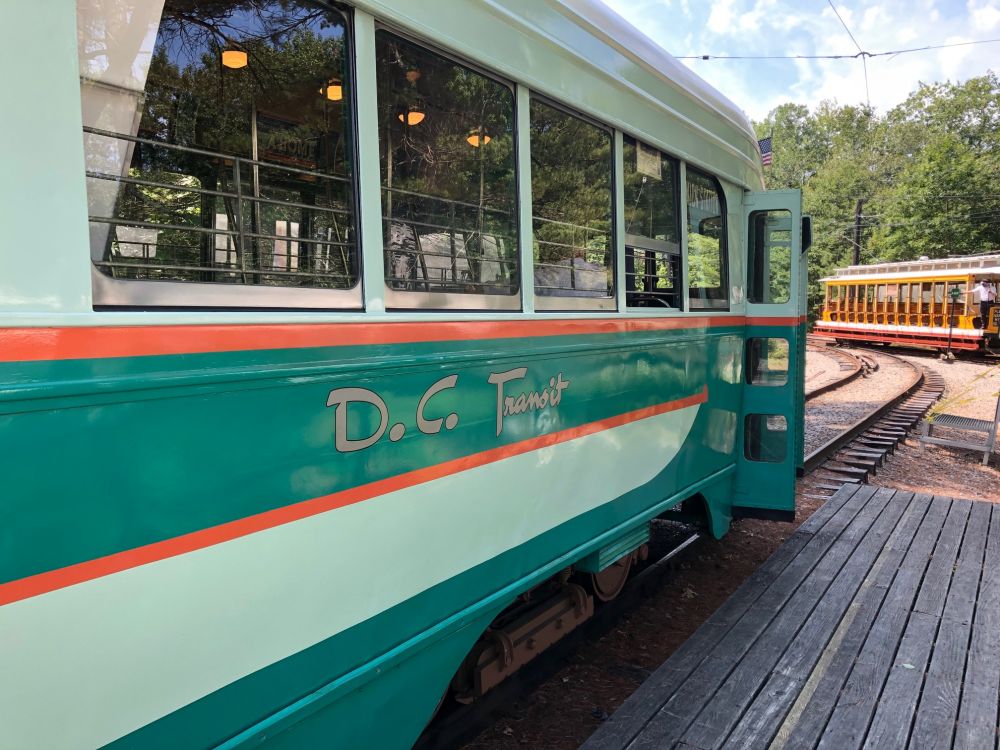
Todd Glickman on 8/04/20
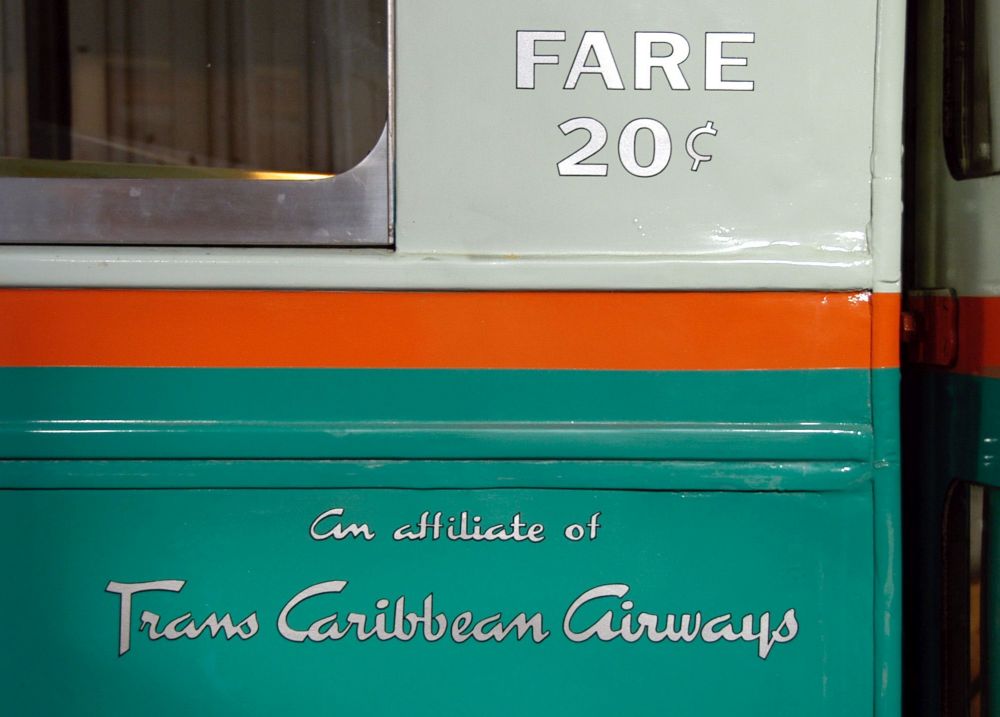
Noman Down
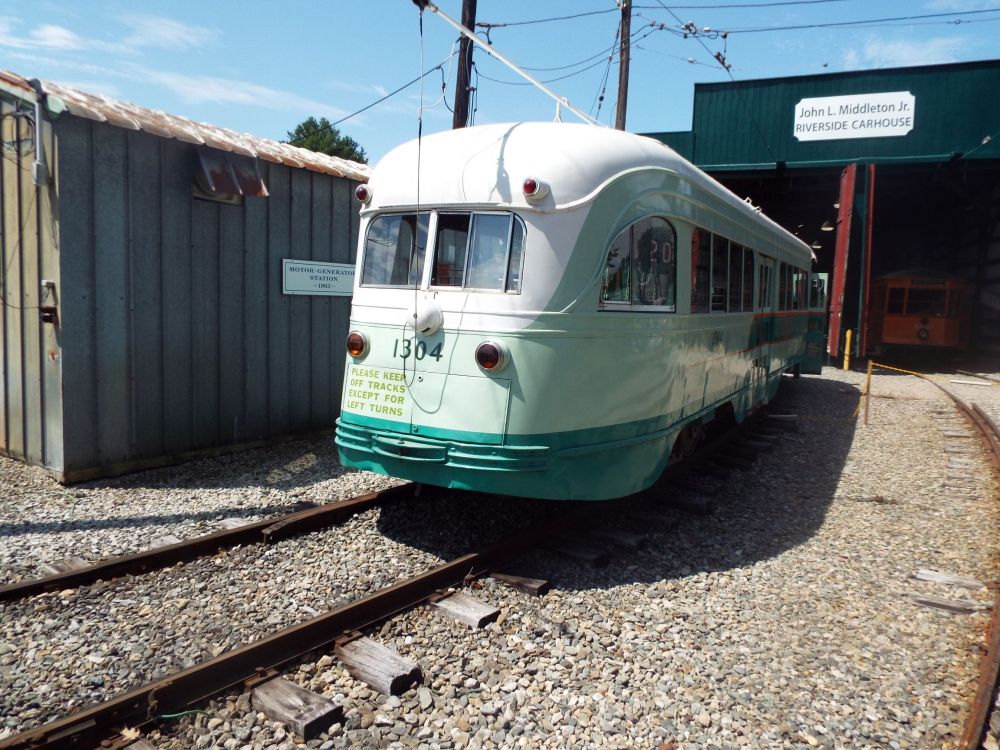
Kenyon F. Karl on 08/14/21
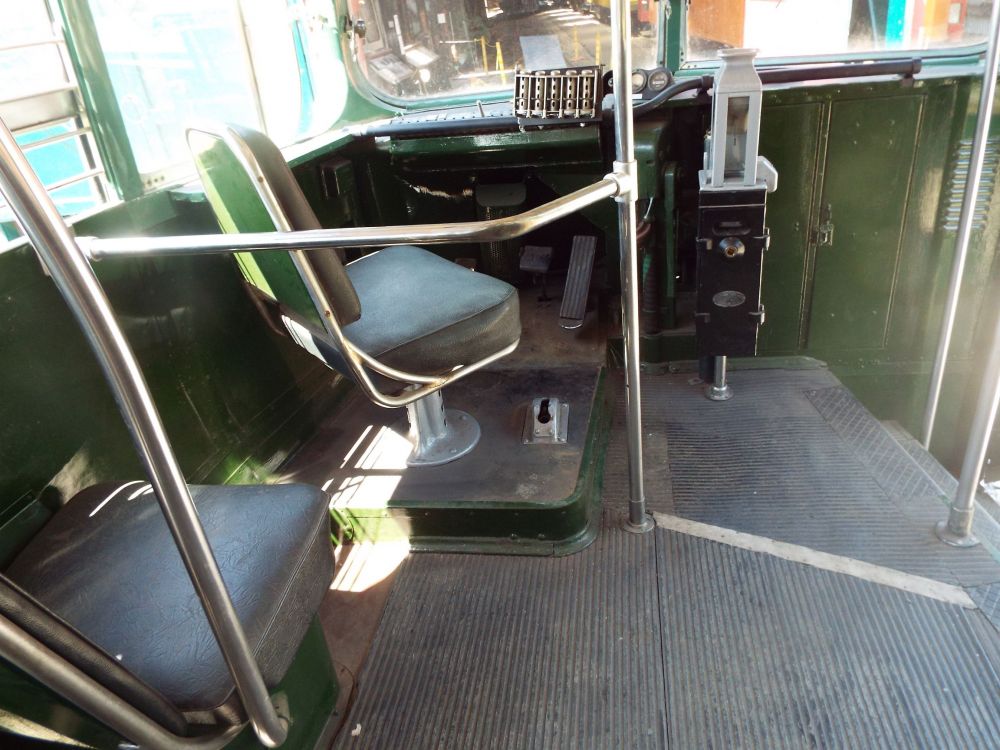
Kenyon F. Karl on 08/14/21
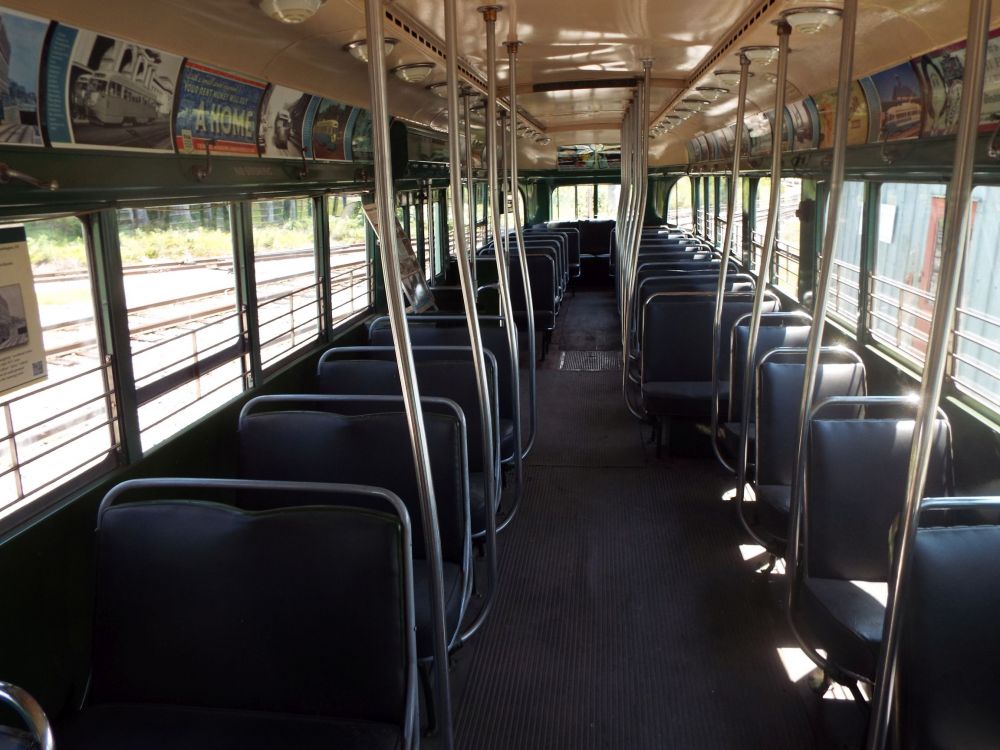
Kenyon F. Karl on 08/14/21
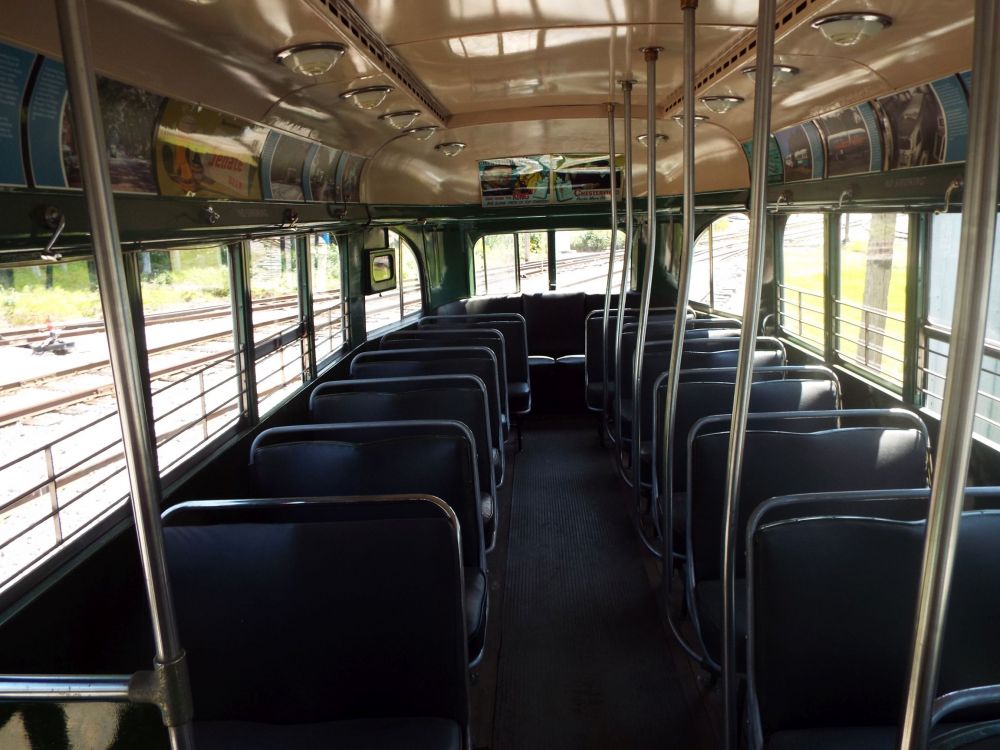
Kenyon F. Karl on 08/14/21

In Washington DC powered by underground Conduit
© 1998 - 2026 New England Electric Railway Historical Society. All Rights Reserved.